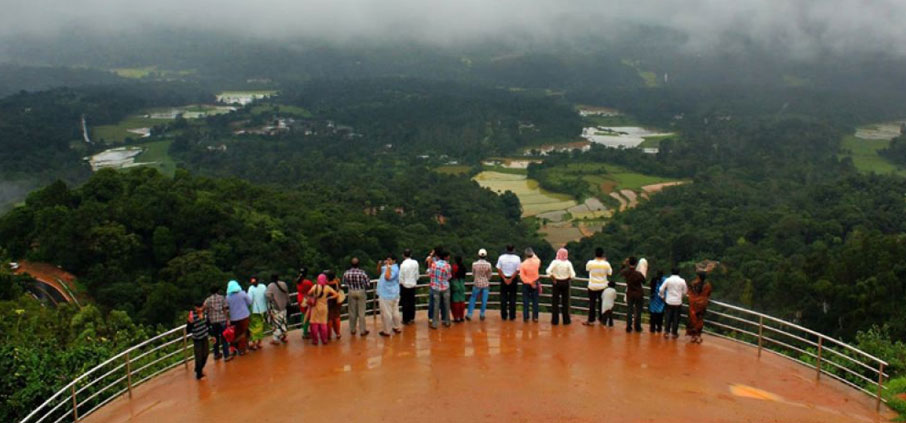Best Tourist Attractions to Marvel at Kodagu District
By JAGAT [21/Oct/24] Kodagu district is located in Karnataka, in the southern part of India. It is a hilly district and is poplar known as Coorg among tourists. It is a thickly wooded grandeur in the Western Ghats, this region is famous for the production of coffee and it plays a vital role in the district’s economy. The pleasant climatic condition is a major characteristic of Kodagu or Coorg which draws tourists from across the country and beyond. Kodagu serves as a favorite summer destination for tourists looking for a respite from the heat and humidity, as well as seeking verdant greenery.
Kodagu district is also a wildlife haven, housing three wildlife sanctuaries - Brahmagiri, Talakaveri, and Pushpagiri Wildlife Sanctuaries and one national park - Nagarahole National Park. Apart from the wildlife destinations, the Kodagu district is also embellished with a number of tourist attractions.

Iconic Landmarks to Visit in Kodagu (Coorg)
Raja's Seat - Raja’s Seat, located in Madikeri, Coorg, is a garden on elevated ground offering stunning views of the western valleys, making it a popular spot for sunrise and sunset. Adorned with vibrant flowers and artistic fountains, this place was once a favorite retreat for Kodagu kings to unwind with their queens. Now a local picnic spot, it features a toy train and musical fountains, and the Archaeological Survey of India manages it as a site of historical significance.
Abbey Falls - Abbey Falls is a beautiful cascade, famous for its natural beauty. Previously known as Jesse Falls, this location is ideal for picnics. Abbey Falls, nestled amid lush coffee plantations and spice estates, offers breathtaking scenery and a tranquil atmosphere. The waterfall showcases its raw beauty as water tumbles over rocks into a pool below, with the sound of its roar audible from the road. During the monsoon, the flow is powerful, while it slows in drier months. A hanging bridge provides a spectacular view, and early winter is the ideal time to visit.
Nagarahole National Park - Formerly known as Rajiv Gandhi National Park, Nagarahole National Park is located between the Mysuru Plateau of Karnataka and the Nilgiri Mountain Ranges of Tamil Nadu. the national park has emerged as a vital example as a part of India’s Tiger Project, instrumental in the increased population of the Bengal tiger. The bus safari at Nagarahole is the primary attraction of the national park, taking tourists deep inside the forest. Besides safaris, local communities actively participate in conservation efforts, benefiting from eco-tourism initiatives that generate income and offer alternative livelihoods. This collaborative strategy has minimized human-wildlife conflicts and strengthened local support for conservation.
Dubare Elephant Camp - Dubare Elephant Camp, once a training ground for elephants in Mysore’s renowned Dasara procession, now offers visitors a unique experience of coexisting with these trained elephants. Naturalists and mahouts, skilled in caring for the elephants, share valuable insights with guests. In addition to elephants, the camp hosts diverse bird species, including peacocks, kingfishers, partridges, and woodpeckers. The lush surroundings also shelter wildlife like spotted deer, tigers, wild dogs, and bears, making it a haven for ecotourists.
Madikeri Fort - Madikeri Fort, a must-visit attraction in Coorg, was originally built by Mudduraja in the late 17th century and later renovated by Tipu Sultan, who renamed it Jaffarabad. The fort has witnessed several rulers, including Doddavira Rajendra and Lingarajendra Wodeyar II. The British added a clock tower and portico in 1933 and repurposed it as the Deputy Commissioner’s office. The entrance features two life-sized mortar elephants. Inside, a former Virabhadra temple was replaced by an Anglican Church, now a museum managed by the archaeology department. Other structures include the Mahatma Gandhi Library, the district prison, and the Kote Maha Ganapathi temple, which participates in the Madikeri Dasara festival.

